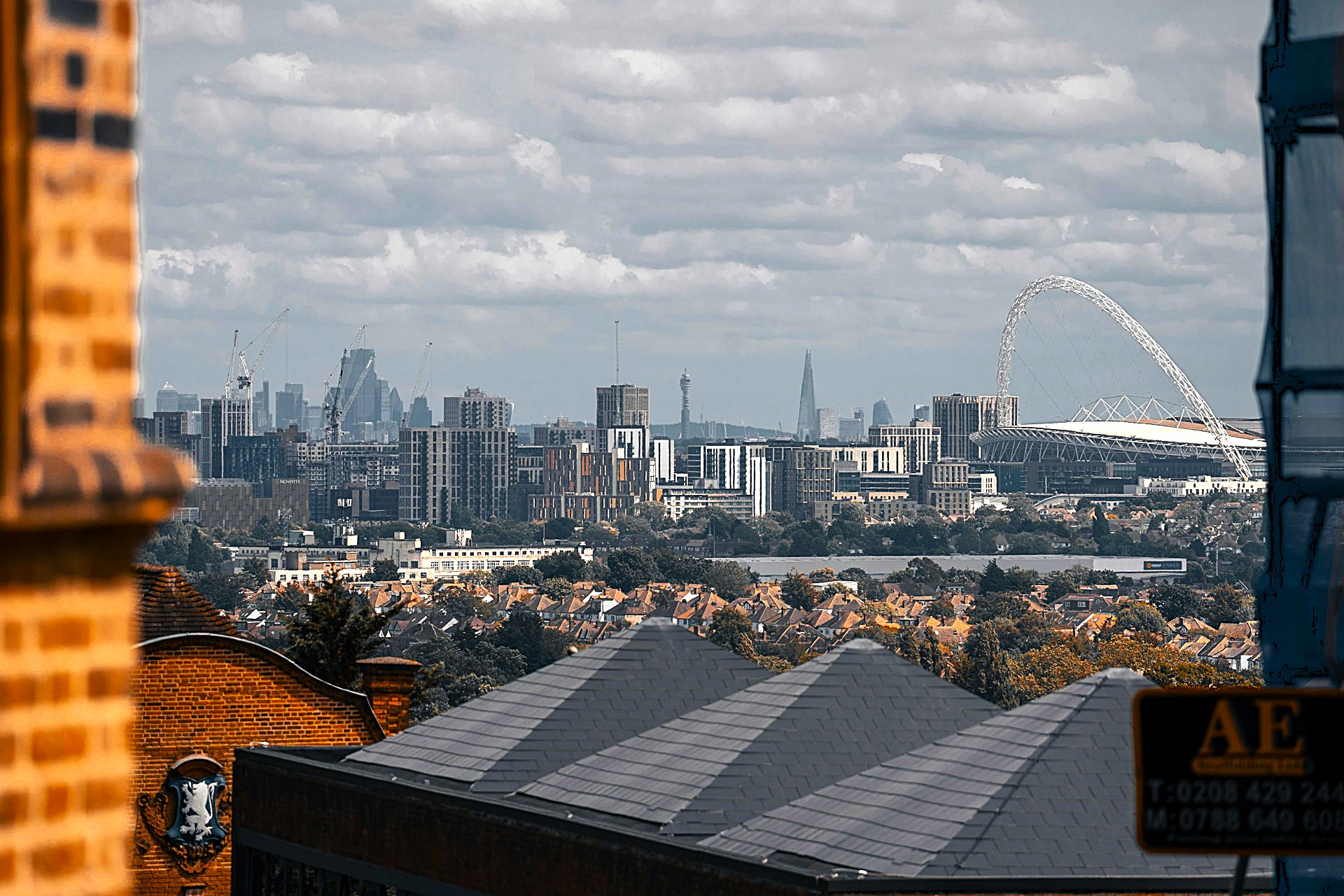From Crisis to Community: How hapipod Tackles London’s Housing Crisis
London, a city renowned for its wealth, culture, and history, is grappling with a housing crisis that stands in stark contrast to its global status. For many, the dream of securing a stable home in the capital has become an elusive goal, as soaring costs, reduced housing stock, and structural inefficiencies push more Londoners into precarious living situations. While the challenges are significant, innovative solutions like ours at hapipod offer a glimmer of hope for a brighter, more sustainable future.
A Historical Perspective on London’s Housing Woes
London has long faced unique housing challenges rooted in its rapid urbanisation and legacy policies. Post-war rebuilding efforts and the introduction of council housing provided temporary relief, yet these solutions were marred by underfunding and uneven distribution of resources. By the time Right to Buy was introduced in the 1980s, a significant portion of London’s affordable housing stock disappeared, sold off without sufficient replacements being built. These trends have set the stage for the acute crisis we see today, with homelessness, overcrowding, and unaffordability reaching record levels.
See also – The damaging legacy of right to buy
Over the decades, the population boom exacerbated London’s housing demand.
The city’s population surpassed 9 million in 2020, yet housing supply failed to keep pace, leaving a stark deficit. Combined with policy inconsistencies, the stage was set for today’s housing emergency.
See also – Cost of housing homeless people in London £4m a day
The Data Driving London’s Housing Crisis Debate
The figures are staggering and paint a clear picture of the crisis:
- Rough Sleeping: Between January and March 2025, over 4,400 people were reported sleeping rough in London, an 8% year-on-year increase. New rough sleepers made up nearly half of this number, underscoring the rapid growth of homelessness. For these individuals, the streets have become both a home and a battle for survival. (CHAIN)
- Strained Temporary Accommodation: Councils now spend £4 million a day on temp accommodation. In addition to more than 183,000 homeless Londoners in temporary accommodation. This figure includes 90,000 children, a heart-wrenching statistic that equates to more than one homeless child per London classroom. Temporary accommodation options like hostels and hotels, while patchwork solutions, place an immense financial strain on local authorities.
- The Shrinking Rental Sector: Between 2021 and 2023, London lost 45,000 private rental homes, further compounding the housing gap. Meanwhile, rents rose by an unprecedented 11.5% in 2024, pricing many out of their neighbourhoods and communities. For low-income Londoners, this trend has created a dire lack of affordable options.
- The Building Challenge: While London must deliver 88,000 homes annually to meet demand. Upfront costs are astronomical, ranging up to 43 times higher than in other parts of the UK. Labour shortages worsen the bottleneck; the capital needs 160,000 additional construction workers to hit national housing targets.
See also – London’s ‘spiralling’ housing crisis in numbers

London councils spend £4million a day on temp accommodations like hostels etc.
The Human Impact of Housing Instability
Behind these staggering numbers are real lives affected by the crisis.
Families forced from their homes by rising rents find themselves in cramped, inadequate temporary accommodations. Children in hostels or shared housing struggle to focus on their schooling. Meanwhile, rough sleepers confront both physical danger and the mental toll of life on the streets. Dr. Sally Zlotowitz of the Housing and Mental Health Network has expressed grave concern about the trauma caused by these circumstances, fearing that many internalise blame for what is truly a systemic issue.
The ripple effects extend beyond individuals.
Entire communities feel the strain as neighbours are displaced. Local economies falter due to rising costs, and councils struggle to fund essential services under the weight of their budgets. Experts agree that without bold interventions, these challenges will only deepen.
See also – London social housing waiting lists at decade high
Critical Housing Crisis Punishes Essential Workers
Essential workers like emergency responders, teachers, nurses, and firefighters form the backbone of London’s services. Yet soaring housing costs are forcing many of them to live far from the communities they serve. With rental prices rising by 11.5% in 2024 alone and affordable housing becoming scarce, these everyday heroes are being priced out of the capital. As a result of this adding hours of stressful commutes to their already demanding jobs.
Whilst not all is bleak with the London Mayor’s Key Worker Living Rent (KWLR) consultation in the pipeline and more creative solutions like hapipod in the market place currently. It appears that a new reimaging of the housing landscape is appearing on the horizon.
hapipod’s homeshare model offers a lifeline, matching these vital workers with homeowners offering affordable rents of £150-£550 per month. By living closer to work, essential workers can save time, reduce expenses, and gain a sense of stability, while also forming meaningful connections with their hosts through shared living arrangements. hapipod not only addresses a financial challenge but also strengthens the community fabric by fostering mutual support between residents and the workers who keep London running.

8% increase in rough sleeping in the capital on the same period in 2024. (CHAIN)
Enter hapipod Homeshare
Amid this bleak landscape, hapipod offers an innovative approach that leverages existing resources to create practical, affordable housing solutions. By connecting hosts with spare rooms to lodgers in need of affordable housing, hapipod taps into underutilised housing stock to provide relief for both parties.
How It Works:
hapipod’s model is simple yet effective. Hosts rent out spare rooms for £150-£550 per month, including bills. Lodgers, as part of the agreement, contribute up to 8 hours of practical help weekly, such as chores, childcare, or running errands. This arrangement not only reduces living costs but also fosters mutually beneficial relationships that build community.
The Numbers Speak:
- Affordable Housing at Scale: hapipod’s price range is significantly below market rent, making it accessible for low-income lodgers, students, and essential workers priced out of traditional rentals.
- Reducing Council Reliance on Temporary Accommodation: By filling spare rooms, hapipod alleviates some of the pressure on councils to provide costly, temporary housing solutions, potentially saving millions annually.
- Easing Loneliness and Isolation: hapipod pairs compatible individuals based on interests and skills, transforming living arrangements into vibrant partnerships, particularly for older hosts living alone in large homes, but increasingly for younger professionals battling with depression in the modern age. The need for social connectivity knows no age boundaries.
Broader Lessons and Opportunities on the Housing Crisis
hapipod is not a one-size-fits-all solution. But it points toward a future where housing crises are met with creative, scalable responses. It underscores the need for flexible, community-driven initiatives that complement larger infrastructure projects and policy reforms. Policymakers should examine hapipod’s success as part of a broader push to rethink how scarce resources are allocated in urban environments.
hapipod’s model also shines a light on the latent potential of the private sector to address social issues. By fostering collaboration between individuals, communities, and platforms like hapipod, cities can simultaneously tackle issues of affordability, loneliness, and underutilised housing.
See also – How hapipod Homeshare Can Help You Cut Rising Home Costs
Toward a Sustainable Future
While London’s housing crisis is deeply entrenched, solutions like hapipod demonstrate that there are opportunities to create immediate impact. Combined with robust government strategies to build more homes, invest in local councils, and train a skilled construction workforce, innovations like homeshare models can pave the way toward a fairer, more affordable city.
hapipod represents more than just a housing solution.
It’s a testament to the power of ingenuity in confronting systemic challenges. London’s housing crisis may be staggering in its scope, but initiatives like ours at hapipod offer hope that even the largest problems can be mitigated through bold, creative action.
Share this content:












Post Comment